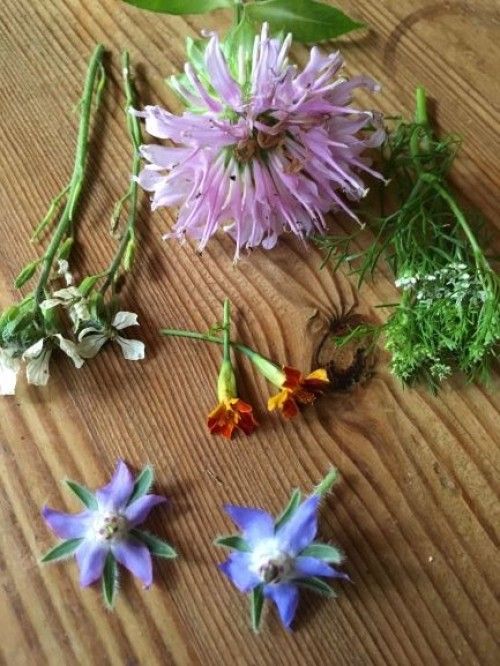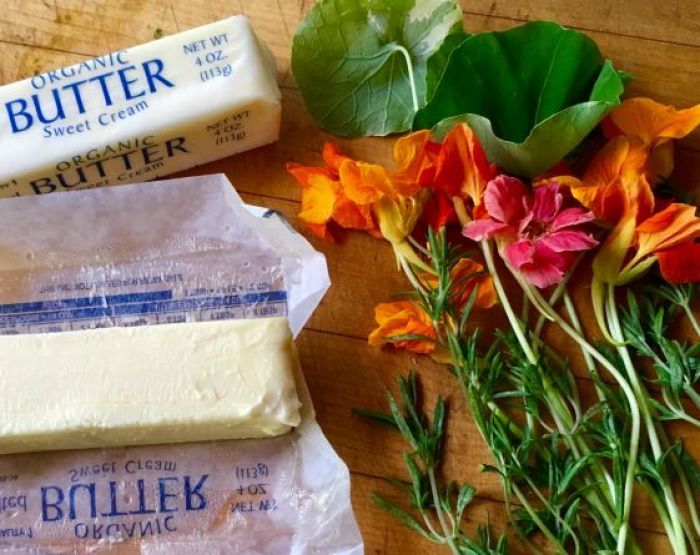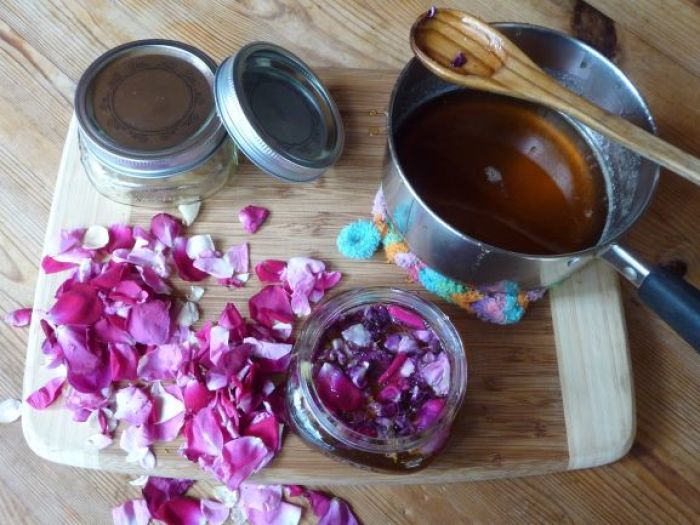
I recently did a webinar for the Herb Society of America by the same title. Right now we are in the height of the summer season and our gardens are full of flowers in bloom–many of them are edible. Bring these into the kitchen for fragrance, flavor and fun!
I want to encourage you to bring flowers out of the garden and into the kitchen. Experiment with new flavors–sample each bloom so that you know what it tastes like and which foods it will go well with–if you don’t like it then don’t eat it! Use flowers to add zest, color and interest as well as new tastes to your table.
Here are a few basic guidelines for using flowers in your kitchen:
Be sure that you have correctly identified the kind of flower that you are about to eat.
Know where your flowers come from–they should be grown in your own garden, or a friend or neighbor’s garden where you can be sure that they are unsprayed. Never use flowers that have been sprayed with pesticides.
Flowers that grow on or near roads have traffic pollution on them-so just because they look pretty-doesn’t mean you should harvest them to eat.
Florists and garden centers almost always sell blooms that have been raised commercially and have been heavily sprayed, so they are not a good source.
Remember to use flowers at their peak for best flavor–don’t use buds that aren’t all the way open and don’t use faded or wilted flowers as they tend to taste bitter.
When bringing flowers in from the garden first try to get rid of the insects outside.
It is a good idea to rinse the flowers gently in cool water and pat them dry.
If you are preparing the flowers ahead of time, they can be stored between slightly dampened paper towels in the refrigerator or put their stems in a jar of water, just like cut flowers.
Many flowers can be eaten exactly as they are, however, some need to be picked from their stems (daylilies) or separated into florets (lilacs, lavender and anise hyssop), some have very bitter centers (like calendulas), and a few have a bitter white part on each petal that needs to be removed (many roses).
The best introduction to eating flowers is to proceed with caution. Take little nibbles of flowers to get to know their flavor. Aroma is a very large part of taste. When serving flowers to guests (or even your own family if they are not used to eating them) do not overwhelm them with large blooms. Instead, separate petals or florets and scatter them over a dish so that they will be more appealing.
Fine Gardening Recommended Products

Corona E-Grip Trowel
Fine Gardening receives a commission for items purchased through links on this site, including Amazon Associates and other affiliate advertising programs.

Ho-Mi Digger - Korean Triangle Blade
Fine Gardening receives a commission for items purchased through links on this site, including Amazon Associates and other affiliate advertising programs.

Fort Vee - Organic Potting Soil Mix
Fine Gardening receives a commission for items purchased through links on this site, including Amazon Associates and other affiliate advertising programs.























Comments
Log in or create an account to post a comment.
Sign up Log in